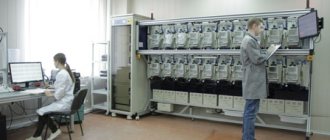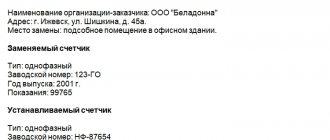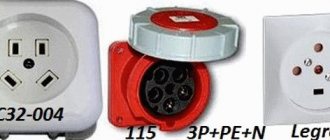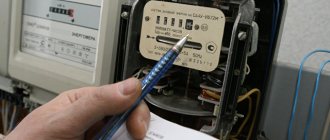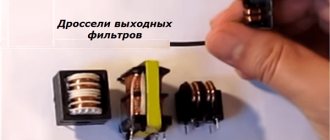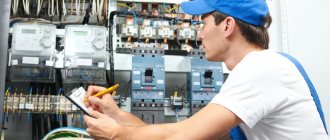Any type of energy that is used in everyday life today is paid. This fully applies to electricity. Therefore, electricity meters are an integral part of the electrical network of a house (private or multi-apartment). True, as for apartment buildings, it is necessary to talk about two types of meters - this is the one that is installed in each apartment, and the so-called building-wide electricity meter, which shows the consumption of electric current in all apartments, entrances and basement.
Classification of metering devices
In principle, electricity meters (indoor or outdoor installation) can be classified according to different criteria. Here are just a few of them.
- According to the measured parameters, the division is carried out into single-phase and three-phase.
- According to the connection diagram: direct and through a transformer. That is, the installation rules are taken into account.
- According to design features, induction, electronic and hybrid.
The first two positions are clear; there is no need to explain here the criteria by which the division is made. But the third one needs to be dealt with thoroughly. So, let's look into it and determine which counter is better.
Induction meter
In essence, these are traditional electromechanical meters. This design uses the principle of magnetic induction. That is, in a stationary coil through which an electric current passes, a magnetic field is formed that will influence the moving element of the counting mechanism. The element is made of conductive material, which is a disk. So the magnetic field will influence it, and under its influence the disk will rotate. The more current passes through the coil (meaning amperage), the faster the mechanism itself will rotate. Hence, in principle, the counter readings, which will be directly proportional to the number of disk revolutions.
However, it should be noted that such electricity metering is gradually disappearing into oblivion. Because induction devices have a number of serious disadvantages. Here are just a few of them:
- They can only be used in single-tariff networks.
- It is not possible to take readings remotely in automatic mode.
- The errors in the readings are too large, which is unacceptable by the new standards and regulations. Modern rules for metering electrical energy are very strict in this regard.
- It is possible to steal electricity. There are a lot of options, life has long proven this.
- Low functionality of the device.
Created many decades ago, these metering devices cannot withstand the loads that are present in modern houses and apartments. There are too many household appliances in our homes.
unofficial SNT "Mars"
Purpose and goals
The automated system for technical metering of electricity (ASTUE) is a combined information and measuring complex, including software and hardware components that allow:
- measure consumed electricity at metering units included in the system;
- transmit measurement results via communication channels to a central server;
- store information and provide authorized access to system users;
- analyze the received data using application programs.
Initially, the work was planned and carried out with the aim of identifying and controlling the causes of imbalance between consumed and paid electricity with the task of minimizing the costs of its creation and maintenance, as well as simplicity, reliability and ensuring its autonomous operation, regardless of the presence and performance of the control system as a whole. In 2022, with the change of chairman, another idea appeared - the transfer of our electrical equipment to the ownership of the energy supply organization. And for this, supposedly, it is necessary to have counters placed on the pole. But there is no specific information. It is assumed that to document this work there must be contracts, licenses, certificates, etc.
System structure
Our technical accounting system is based on PLC-I technology. This is a technology for remote data collection and control of Mercury electricity meters via existing power wires of the power line. This approach allows you to significantly reduce capital costs for its implementation, because There is no need to lay additional communication lines or create a radio channel. The equipment used for its intended purpose can be conditionally assigned to one of three levels of the hierarchy of tasks performed: lower, middle and upper.
Lower level
The lower level includes measuring instruments, i.e. electricity meters located in metering units on power line supports. We chose Mercury 206 PLNO meters for single-phase connections and Mercury 234 ART-01 OL1 meters for three-phase connections. The selected meters are programmable devices that have the following functionality:
- Metering of active and reactive energy in multi-tariff (up to 4 tariffs) or single-tariff modes. The current meter setting is two-tariff metering.
- Storage, display on the LCD indicator and transmission via interfaces of the following accounting information:
- active and reactive energy on a cumulative basis for each tariff and by amount;
- active and reactive energy at the beginning of each of the 12 previous months for each tariff and by amount
- Storing archival information read through digital interfaces:
- daily active energy profiles for 6 months;
- monthly slices of active energy for 4 years
- Measurement, display on the LCD indicator and transmission via interfaces of the following power network parameters:
- instantaneous values of active and reactive power and recorded maximum;
- effective values of phase current and voltage and their maximums;
- network frequency
- Load control by setting active power and energy limits and turning off the load when limits are exceeded or by command through a built-in relay.
- Formation of a load power profile in the form of an array of active energy powers averaged over 30 minute intervals. The archive storage depth is 6 months.
- Availability of an event log that records:
- meter on/off time
- device opening/closing time
- time, date and parameterization code.
- The current sensor is a shunt (not sensitive to the effects of a magnetic field and takes into account the direct component) in the phase circuit;
- Availability of digital interfaces: optical port and PLC-I modem;
- Electronic seal.
- reception, processing and storage of energy consumption data;
- transmission of individual and group commands to counters;
- synchronization of internal clocks of multi-tariff meters;
- data relay to increase coverage area;
- generation of data on emergency technical condition of the system.
- real-time monitoring of power consumption;
- analysis of the structure of electricity consumption, identification of irrational use of energy resources;
- use of the obtained data to develop energy saving policies.
- Who would bother to turn on this circuit breaker if it were suddenly knocked out? Especially at night and in the rain. And at whose expense?
- How do I even understand which of these counters is mine?
- Some areas have more than one meter installed. Why can these areas physically consume twice as much?
- Three-phase meters will be installed in some areas in the future. Why can they physically consume three times more? Where is the equality?
Placing additional monitoring devices at branch points of power lines will help to quickly localize the problem and take measures to reduce the amount of losses.
Average level
The middle level consists of devices that collect and transmit data, as well as communications. To receive and accumulate data from meters, we use Mercury 225.11 concentrators. These devices are single-channel digital information receivers. Each phase is served by a separate concentrator. Hubs are the central node of a network of PLC devices and provide:
At the moment there is no more detailed information about where these hubs will be located and how data is transferred to the server.
Top level
The top level is server hardware and software. At the moment there is no information on what hardware and software base the system will be implemented on. It can be assumed that a certain computer with the Mercury-Energy Accounting software package will be installed. The total cost of such a kit can be 60,000 rubles.
Principle of operation
Meter readings are recorded in the system synchronously, at certain intervals. The hub sends a request to the meters and receives the requested data packets in response. Through communication devices, the necessary information is sent to the server, where it is processed and stored.
An automated system for technical metering of electricity allows you to:
Technical implementation
The description of the technical implementation of the system can be divided into two time periods: before January 1, 2022 and after.
First batch of meters
In 2016, the structure of the system being implemented, technical means and components were selected, taking into account the peculiarities of equipment placement.
In accordance with the passport data on the meter:
Designed for use indoors: can only be used in places that have additional protection from environmental influences (installed indoors, in a cabinet, in a panel). According to operating conditions, it refers to GOST 22261-94 with a temperature range from minus 45 to plus 70°C.
Taking these requirements into account, to ensure installation conditions, a plastic box with a degree of protection of IP65 without additional insulation was selected, which will be placed on a power line support. Because Since the selected meters are equipped with PLC modems for transmitting readings, they will not require periodic visual monitoring to take readings. We will consider them not as counters, but as measuring instruments of the system. Therefore, while fulfilling all the manufacturer’s requirements for their placement according to environmental conditions, we will not literally comply with the requirements of the electrical installation rules (PUE) in part 1.5.27-1.5.38 “Installation of meters and electrical wiring to them.”
The assembled boxes were placed as high as possible under the power line wires in order to minimize the wire used and the risks of unauthorized connection, as well as ensure electrical safety. The system concentrators were also placed in a similar plastic box on one of the poles. A WiFi transmitter was also installed there to provide access to the system server.
In order to minimize costs, a personal computer located in Moscow was used as a server for the accounting system. The same one on which you are now viewing these pages. It is accessed via the global Internet. This server implemented automatic processing of the received data at the beginning of each day. As a result, the individual electricity consumption of each subscriber per day and per month was known. After integrating payrolls, which are filled out when paying for electricity, into the accounting system, the individual current debt of each gardener was known. At the same time, the correctness of the data in the statements was checked. If errors were detected, the subscriber was notified and the payment was subsequently recalculated. A WEB site was also developed to allow authorized viewing of available information. This work was performed free of charge.
The system in this form worked flawlessly for 14 months. Having external access to this information, if you wish, you could control the operation of your electrical equipment, because Sometimes you can forget to turn something off or, conversely, turn it on. In winter, such information could help take timely measures to prevent the consequences of freezing water in the house.
Transition period
At the 2022 General Meeting it was decided to continue with the installation of control meters. At the same time, the chairman of the SNT changed. Issues arose regarding the conclusion of contracts, property rights, etc. It became clear that it would not be possible to transfer the current server equipment into the ownership of SNT, and there was no point. No performer - no technical support. Purchasing a computer and official software will only partially solve the problem, because... The computer needs to be installed somewhere, ensure acceptable operating conditions, safety and, in fact, operability. Who will do it? On what terms? It is irrational to heat our management booth and it is unlikely that we will be able to ensure the safety of the equipment. And any additional costs call into question the feasibility of implementing this system.
As a result, the chairman buys the same single-phase meters, and the current (at that time) contractor is offered an Agreement with terms, penalties, warranty obligations, etc. to perform the work. The chairman was refused to sign and amend this agreement.
The Chairman, without taking into account the opinion of the Board, makes his own decision - to hire an official organization to implement the system. Therefore, as of January 1, 2022, the operation of the system was officially stopped, and the system's on-demand hubs were transferred to the chairman. From January 31 to February 9, 2022, work was carried out to install the second batch of meters using the forces of this organization.
What did we get?
Second batch of counters
It was clear that changes were expected. In the absence of any information, one could speculate. As an option, it was expected to install some metal boxes at the level of human height, similar to what was done in SNT "Kozlovo", but this means that there will be a lot of wires along the pole. Or will they do it the same way as in the first game - put it on top? But in the end we got boxes in the middle of the pillar. And you can’t look at the meter, you have to climb, and there’s a bunch of wires along the pole...
During installation there was no general power outage in SNT. Only the installation was done “carelessly”. There were random coils of wires on the poles. Especially where more than one meter was installed. It is clear that winter and wires do not bend. But why do this need to be done in February?
New plastic boxes ShchURn-P, judging by the manufacturer’s documentation, are intended for installation on poles and walls outdoors only under a canopy. This condition is not met. However, two wires in one gland also do not contribute to the declared level of protection. There are transparent viewing windows on the front cover. The red meter light flashes from the inspection window. By the frequency of flashing, you can determine the presence and level of electricity consumption in the area. The box also contains a 32A input circuit breaker.
But let's not quibble over details. Everything was done technically correctly, i.e. It will work under certain conditions, but it turned out ugly and not very well thought out. Questions immediately arise:
No work has been carried out since February 9. Not all single-phase meters have been installed yet, and three-phase meters have not yet been installed. All installed meters operate autonomously without a monitoring system. And what will happen next is completely unclear. Who will do all this? How much will it cost to connect or change something? How will control be carried out? Standard means do not support our payment method - once you come and pay something. You may have to change something in the rules or principles of payment. But maybe the chairman or other responsible person will take charge of this and all issues regarding electricity will become a thing of the past.
Conclusion
When used correctly, an automated system for technical metering of electricity can serve as a powerful tool for monitoring electricity consumption, identifying causes and reducing losses. But this needs to be done constantly.
Nefyodov Kirill, class 73
07.03.2018
Requirements for electric current metering devices
What are the requirements for electricity metering devices today? There are three main indicators. We will talk about them further.
Accuracy class
Let's start with the fact that the accuracy class is the error of indications. Until the beginning of the new century, everyone was satisfied with class 2.5. That is, an old-style meter was installed in the electricity metering cabinet (outdoor or indoor). And that was the norm. Today everything has changed, and the approach to accuracy of readings comes first. A new standard was introduced, which was based on a device with an accuracy class of 2.0. What does it mean? This device has an incorrect reading rate of 2%.
That is why today, everywhere, old induction meters are being replaced by new electronic ones. Although we must pay tribute to the fact that the latter also win in other respects.
Tariffs
The multi-tariff electricity consumption system is economical. This is the main component of this criterion. After all, just recently our country used a single-tariff system. This mainly concerned household networks. Of course, in terms of accounting, this was simpler, and also profitable for energy supply organizations.
Modern electronic devices allow you to keep records by time of day and even year. That is, during the day during peak consumption the tariff is higher, and at night, when everyone is sleeping, it is lower. It is clear that those who transfer the main life cycle to the night benefit greatly by saving on the low tariff. Many people do this, for example, they load washing machines at night and so on. How do energy supply companies benefit from this? There is no gain in purely financial terms, but there are many technical advantages.
- During the day, the networks are unloaded.
- At night, on the contrary, they are loaded.
How does the calculation work?
In order to carry out calculations on the wholesale volumes of the electricity market, the main requirement is the presence of a passport, in other words, a certificate of compliance of the AIIS KUE with the technical requirements of the market. The situation on the retail market is a little simpler. To organize commercial metering in the household sectors, it is enough to install a proven and technically sound electricity meter, which will be included in the state register of measuring instruments. To put the metering device into operation, you need to call an employee of the energy supply organization to receive and seal the control unit.
The collection of all commercial accounting data is carried out by network organizations, which each belong to their own network. Network organizations have the right to conduct checks to ensure compliance with all consumer conditions that were in the supply agreement. On the part of network organizations, legal owners, consumers and producers, representatives of network organizations must be provided with access to control devices that are located on the territory of the balance sheet of their electric networks. This is necessary to monitor the status of the device and read readings.
Briefly about the main thing
A remote energy meter allows you to transmit energy consumption readings without personally viewing the data on the LCD display.
In addition to meters with remote data transmission, you need to install a controller and connect it to the Internet.
Information about energy consumption can be viewed at any time from your phone or computer in your personal account on the electricity supplier’s website.
Popular manufacturers of meters are Energomera, Taypit and Inotex.
Popular samples
Among the manufacturers of meters with data transmission, such as Taypit, Energomera and Inotex are highly respected. The first began work in St. Petersburg in 1999, the second in 2010. The latest domestic representative with 15 years of experience occupies a leading position in the Russian market.
Among the models, the most popular are the Mercury series from Inotex:
- 231 AM-01 – commercial single-tariff, three-phase, operates at -40-+55 degrees Celsius
- 200.02 – commercial multi-tariff, temperature conditions are the same;
- 201.8 – single-tariff, single-phase, with LCD display, operates at -45-+75 degrees;
- 231 AT-01 – universal, three-phase, 2-4 tariffs, operates at -40-+55 degrees.
Electric meter Mercury 231 AT-01 Source svet-el.com
From Taipit, an interesting single-tariff meter Neva 103 1SO of mechanical type. Operates at -40-+60 degrees Celsius. From the Energy Meter, models CE102M S7 145-JV (universal multi-tariff) and CE300 R31 043-J (three-phase, single tariff) stand out. Both work at -40-+60 degrees. All meters have 1st class accuracy except the last one. Here the value is 0.5-1.

